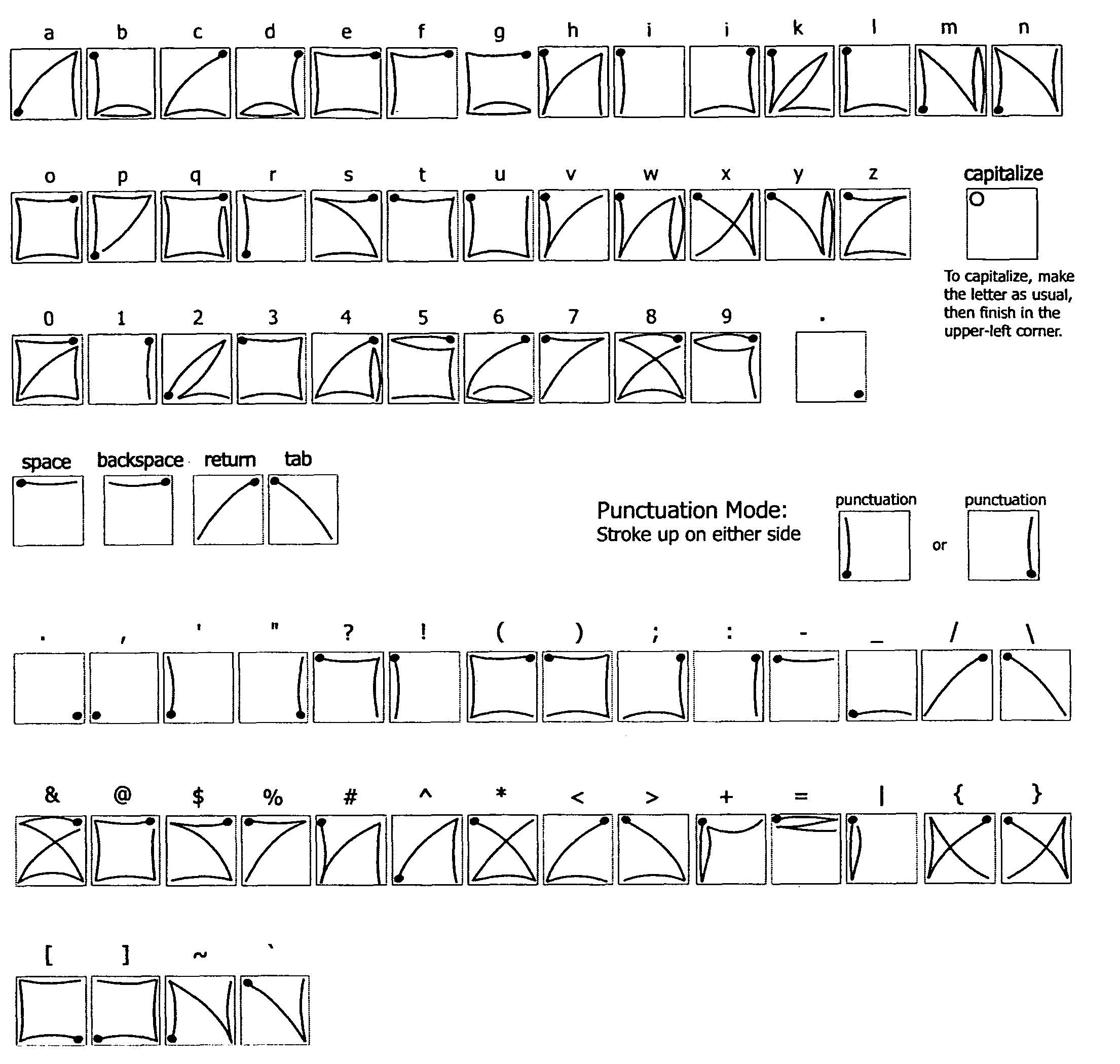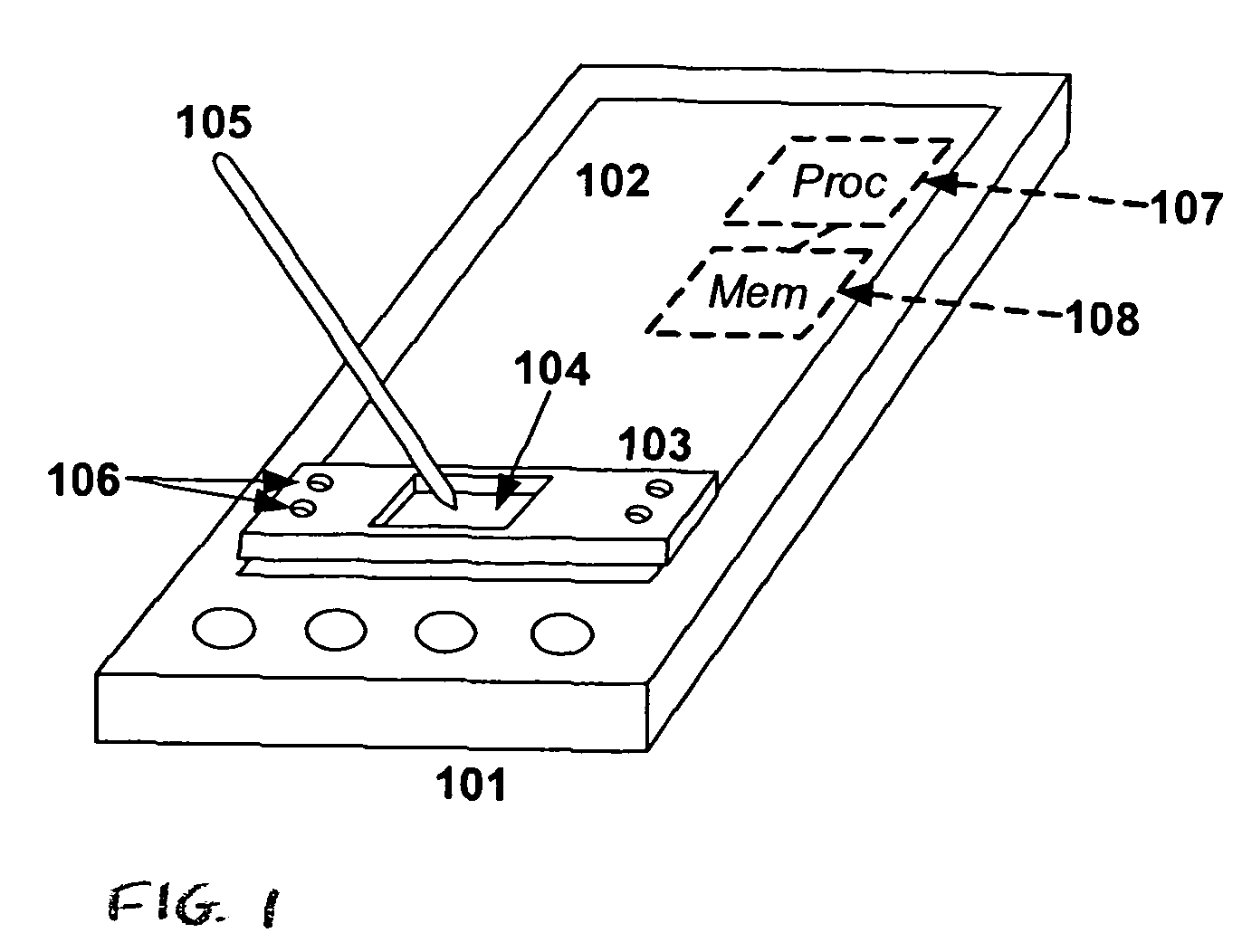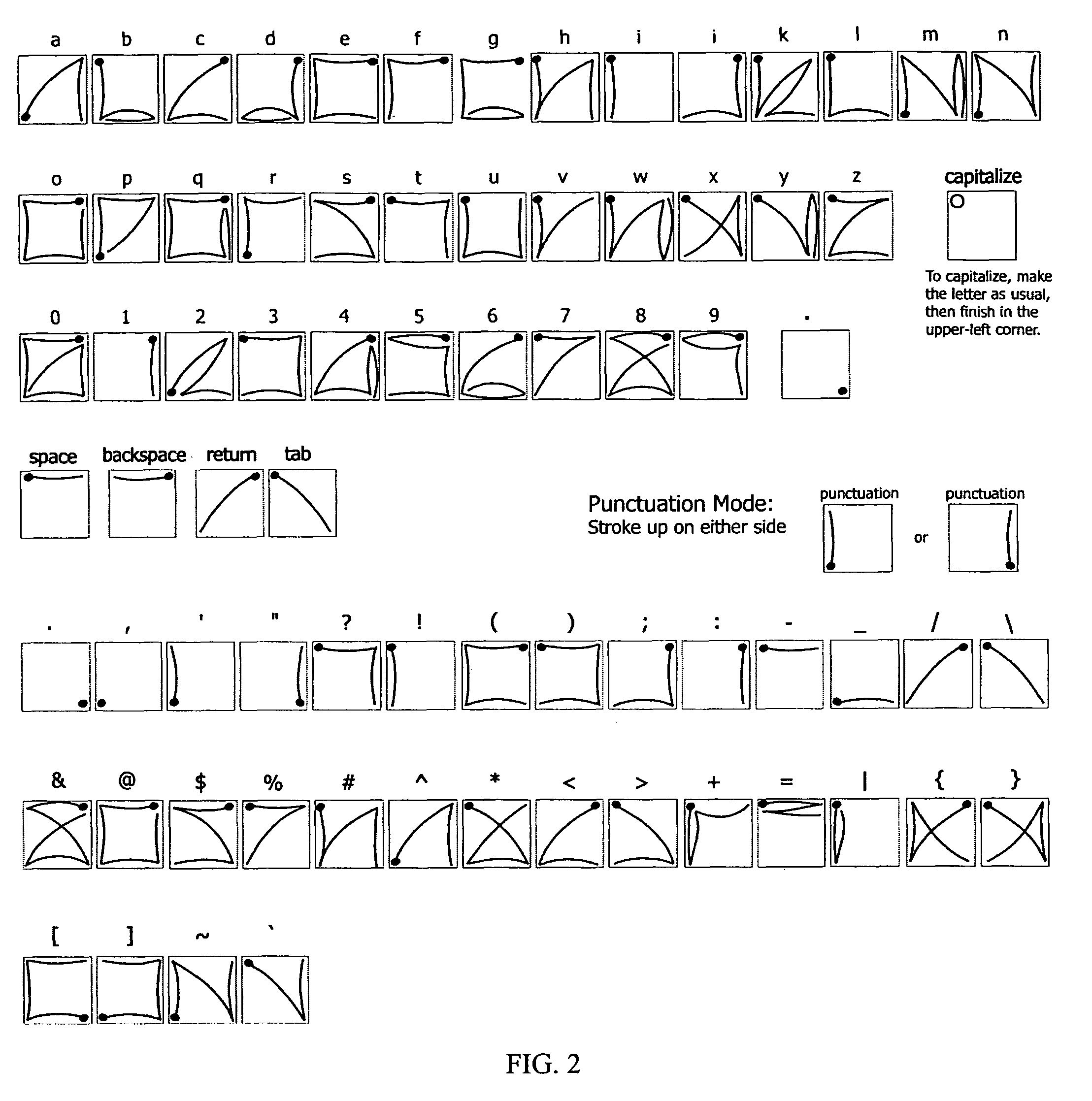Using edges and corners for character input
a character input and edge technology, applied in the field of character input using edges and corners, can solve the problems of consuming precious screen space, difficult to obtain keys, and difficult to enter text on handheld and wearable computerized devices, so as to improve the quality of text input, reduce movement variability and movement offset, and improve the effect of text quality
- Summary
- Abstract
- Description
- Claims
- Application Information
AI Technical Summary
Benefits of technology
Problems solved by technology
Method used
Image
Examples
Embodiment Construction
[0026]FIG. 1 shows one embodiment of the present invention where these edges are imposed on the text entry area of a PDA by means of a transparent plastic template 103 with, in this embodiment, a square hole 104. All text entry is performed inside this hole. Our experimental results show that extensive iteration of the character set has made the character forms highly guessable and easy to learn, maintaining a low cognitive workload for the user.
[0027]In particular, we found that when compared to Graffiti, the present invention was 18% more accurate during text entry for able-bodied users formerly unfamiliar with either technique. This benefit came without a significant cost in speed. Users with motor impairments (such as Parkinson's, Cerebral Palsy, and Muscular Dystrophy) succeeded at using the present invention but were largely unable to use Graffiti.
[0028]The present invention can be used as a stylus-based unistroke input technique. To make a character, the user places the stylu...
PUM
 Login to View More
Login to View More Abstract
Description
Claims
Application Information
 Login to View More
Login to View More - R&D
- Intellectual Property
- Life Sciences
- Materials
- Tech Scout
- Unparalleled Data Quality
- Higher Quality Content
- 60% Fewer Hallucinations
Browse by: Latest US Patents, China's latest patents, Technical Efficacy Thesaurus, Application Domain, Technology Topic, Popular Technical Reports.
© 2025 PatSnap. All rights reserved.Legal|Privacy policy|Modern Slavery Act Transparency Statement|Sitemap|About US| Contact US: help@patsnap.com



